
Our Research
Our searchable, filterable collection of research offers evidence-based guidance for practitioners and policymakers committed to advancing racial and ethnic equity in education.
Use any combination of the filters below to limit results by age or research area. You can also enter keywords in the search box to locate known resources quickly.

Partnership with SCASD
Description: The partnership between the State College Area School District (SCASD) and the Center for Education and Civil Rights (CECR) supports the district in advancing equity through data analysis, professional development, and strategic collaboration. The partnership produces equity-focused reports that highlight and address disparities. The partnership additionally includes a focus on mathematics.
Source: Co-led by Dr. Erica Frankenberg and Dr. Andrea McCloskey
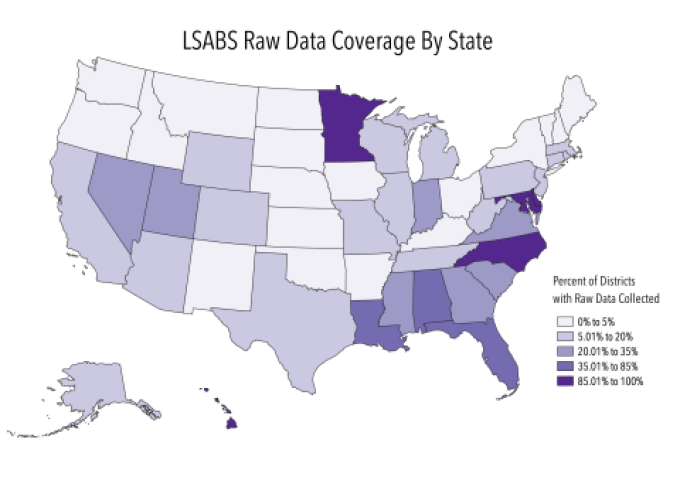
Longitudinal School Attendance Boundaries Study (LSABS)
Description: The Longitudinal School Attendance Boundary Survey (LSABS), represents a cross-discipline partnership between researchers in the College of Education and the Department of Geography at Penn State. The groundbreaking effort to collect long-term data on school attendance zone boundaries from districts nationwide.
Source: Co-led by Dr. Erica Frankenberg and Dr. Christopher Fowler
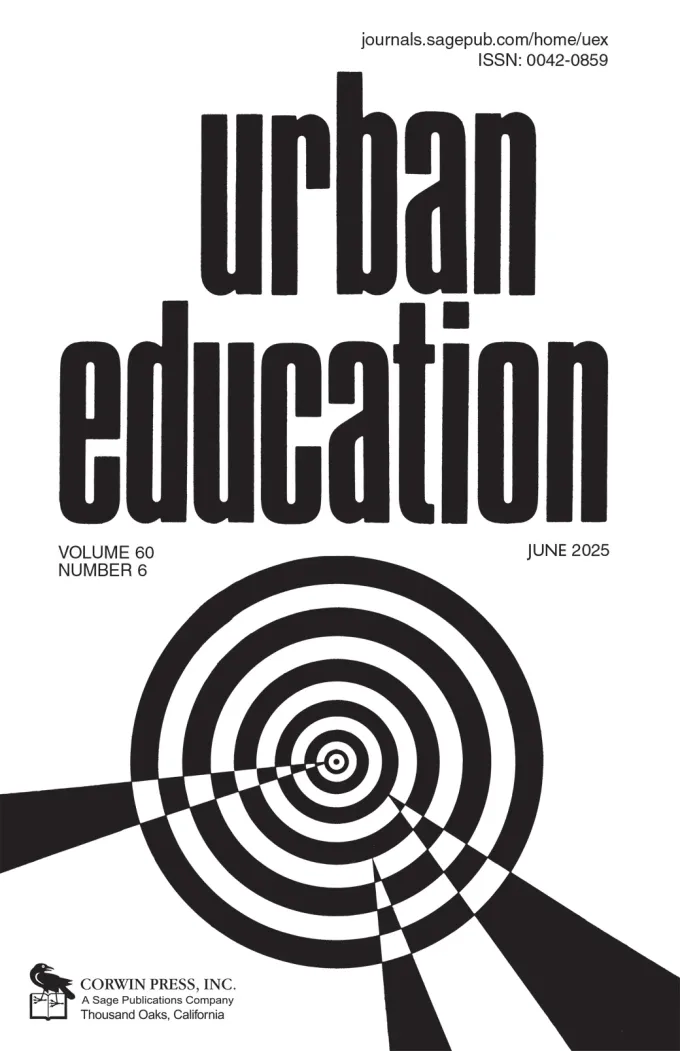
Eroding Integration: 21st Century Segregation Trends in U.S. Public and Charter Schools and Implications for the Enduring Promise of Brown
Description: Drawing on Boddie’s adaptive discrimination framework, this article analyzes changes in demographic trends from 2002–2021. Our findings reveal a continuation of several longstanding trends, including increased racial/ethnic diversity in public school enrollment; deepening racial isolation within districts; persistent, high isolation for Black students; high but declining isolation for white students; growing isolation for Hispanic and Asian students; and substantial variation across regions. The growth of charter school enrollment and segregation since 2002 is striking, with substantial increases in many urban areas. Seventy years after Brown v. Board of Education, these trends reveal the continued effects of adaptive discrimination via privatization. (2025)
Source: Erica Frankenberg, Caprial Farrington, Elizabeth DeBray, Genevieve Siegel-Hawley, Talia Leibovitz, Sarah McCollum, Janelle Scott, & Kathryn McDermott

Racial, Linguistic, and Economic Diversity Across Schools with Two-Way Dual Language Immersion Programs: Evidence from the Los Angeles Unified School District
Description: Two-way dual-language immersion (TWDL) programs aim to combine English speakers and speakers of a partner language in the same classroom to receive content instruction in both languages. Stated goals include bilingualism and biliteracy, high academic achievement, and sociocultural competence. In school districts aiming to reduce segregation, TWDL programs also can integrate students from diverse linguistic, racial, and economic backgrounds, although mounting evidence shows that equitable integration does not always happen. We find that elementary schools with TWDL programs are enrolling increasing numbers of racially, linguistically, and economically marginalized students and are generally more diverse than schools without TWDL programs, although there appear to be limits on the potential of TWDL programs to foster diversity, especially in a segregated urban context.(2025)
Source: Sarah Asson, Erica Frankenberg, Clémence Darriet, Lucrecia Santibañez, Claudia Cervantes-Soon, & Francesca López

Historical Patterns and Trends in Racial/Ethnic Disproportionality in School Discipline in the United States
Description: This visualization represents the historical patterns and trends in racial/ethnic differences in punitive school discipline over the last five decades in K–12 public schools in the United States. Overall, out-of-school suspension rates show an inverted-U trend with significant increases between 1970 and 2010 followed by decreases in the last decade. On the other hand, corporal punishment rates (and associated racial/ethnic disparities) show a consistent negative trend since the early 1980s following statewide bans in the use of corporal punishment in schools since the 1970s. However, racial/ethnic disproportionality in school discipline remains persistent across the board; indeed, increasing until the very last few years for Black and American Indian/Alaskan Native students compared to White students. (2024)
Source: Maithreyi Gopalan, Sarah Asson, Michael Cattell, Jr., & Erica Frankenberg

AdvancED Equity
Description: The work of AdvancED Equity uses original research, data harmonization, and dissemination of public data resources on diverse students’ experiences in schools and colleges to support researchers, policymakers, and educational practitioners who use our research and data to develop evidence-informed solutions to improve educational equity.
Source: Penn State CECR, UVA School of Law, & The Civil Rights Project
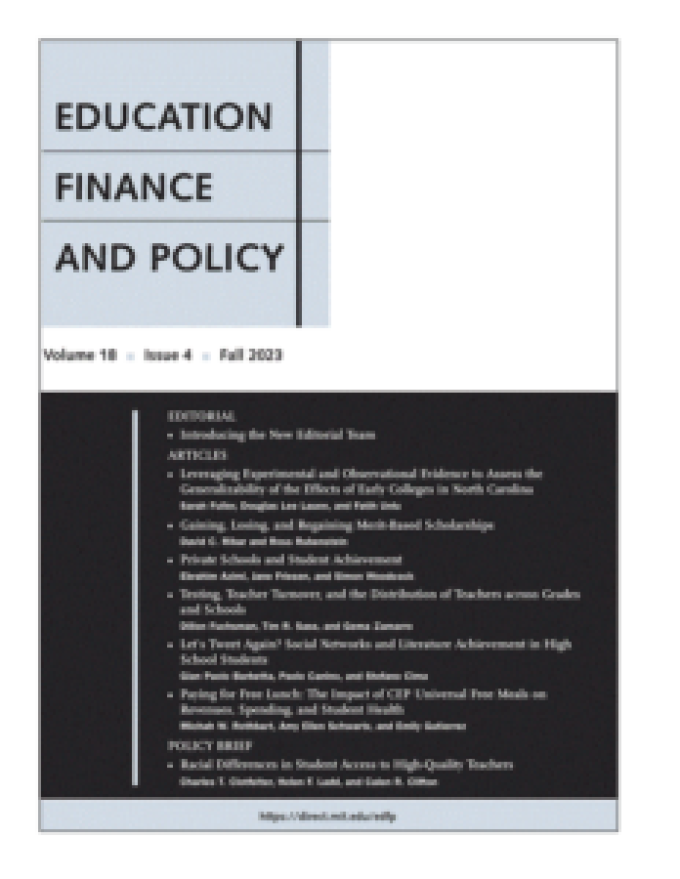
Data Access and the Study of Educational Equity: Implications from a National School Boundary Data Collection Effort
Description: School attendance zone boundary (AZB) data remain relatively underdocumented and understudied within the field of education, despite their critical implications for educational (in)equity. AZBs shape student outcomes and residential sorting patterns both by determining the public schools a student is assigned to and by signaling neighborhood characteristics to prospective homebuyers. The limited access, regulation, and review of AZB data to date has left a gap in the knowledge base, having the potential to leave intact (and exacerbate) patterns of segregation that maintain inequities in educational opportunity. Lack of data also limits our ability to know whether and when AZBs may mitigate segregation. In this brief, we examine a novel data collection effort of current and historical AZB data—the Longitudinal School Attendance Boundary System—to explore the contextual and political factors associated with data access and data quality. We aim to show how factors that hinder access to quality AZB data affect the study of educational equity, and we advocate for more comprehensive, top–down governmental efforts to create, maintain, and collect these data. (2023)
Source: Sarah Asson, Erica Frankenberg, Annie Maselli, Ian Burfoot-Rochford, Christopher S. Fowler, & Ruth Krebs Buck

Small Advances and Swift Retreat: Race-Conscious Educational Policy in the Obama and Trump Administrations
Description: Erica Frankenberg, along with Genevieve Siegel-Hawley and Kathryn McDermott, conducted research on race-conscious educational policies in the post-Obama era, focusing on how federal civil rights policies evolved during that period. They investigated the impact of separation of powers, federalism, and civil society on these policies. The study explored how the Obama and Trump presidencies influenced the role of the federal government in fostering K-12 race-conscious educational policies and the mechanisms used to advance them. | (Education Policy Analysis Archives, 2023)
Source: Genevieve Siegel-Hawley, Erica Frankenberg, Kathryn McDermot,t Sarah McCollum, Janelle Scott, & Elizabeth DeBray
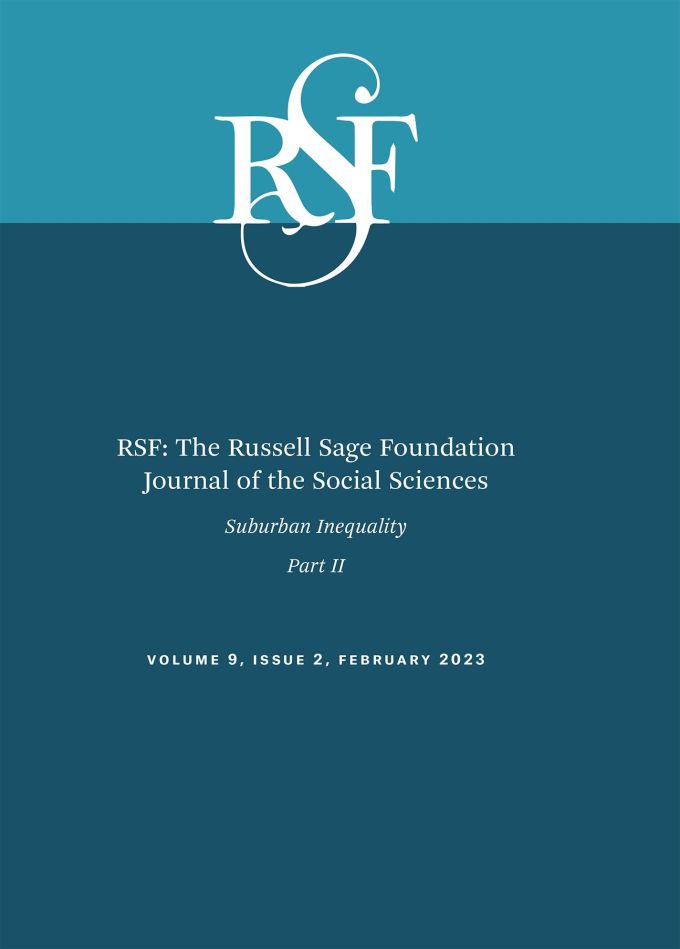
Demographic Change and School Attendance Zone Boundary Changes: Montgomery County, Maryland, and Fairfax County, Virginia, Between 1990 and 2010
Description: We analyze the relationship between residential populations, school attendance zone boundaries (AZBs), and school enrollments in two large, countywide suburban districts, Fairfax County, Virginia, and Montgomery County, Maryland, from 1990 to 2010. A steep decline in white, school-age children and an increase in black, Hispanic, and Asian children in both neighborhoods and the schools that serve them suggests that white households reluctant to send their children to diversifying schools are exiting (or never entering) these districts entirely rather than sorting within them. AZB changes, often due to the opening of new schools, affect a large portion of both districts, but boundary changes are associated with only a small portion of increased segregation observed in both schools and neighborhoods between 1990 and 2010. Our findings speak to the complex, multidirectional relationships between demographic trends and AZBs in diversifying, growing suburbs. (2023)
Source: Erica Frankenberg, Christopher S. Fowler, Sarah Asson, & Ruth Krebs Buck

Attendance zones in the suburbs
Description: While suburban schools across the country have become increasingly racially and economically diverse in recent decades, many remain highly segregated. School attendance zone boundaries (AZBs) play a critical role in shaping these patterns of within-district segregation. AZBs are especially important in suburban areas with growing and diversifying student populations. Using novel, longitudinal AZB data dating back to 1990, authors Sarah Asson, Erica Frankenberg, Christopher Fowler, and Ruth Krebs Buck studied the relationship between AZBs and segregation over time in three large suburban districts. They found AZB changes have not yet been realized as a force for desegregation. To do so will require more explicit action prioritizing racial and economic diversity. (2023)
Source: Sarah Asson, Erica Frankenberg, Christopher S. Fowler, & Ruth Krebs Buck
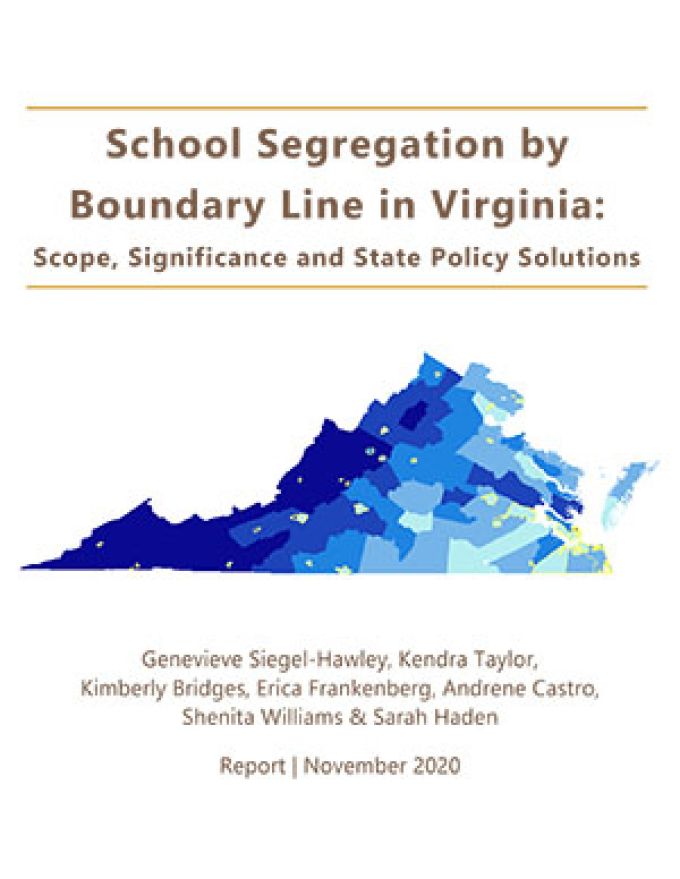
School Segregation by Boundary Line in Virginia: Scope, Significance and State Policy Solutions
Description: School segregation by race and poverty is deepening in Virginia. In an era of swift demographic change in both cities and suburbs, alongside sharply rising inequality, renewed attention to the dynamics of segregation grows more important. School district and attendance boundary lines that wall-off communities with highly differentiated wealth help structure segregation. Over time, these invisible boundaries acquire strong social meaning flowing from the unequal allocation of educational resources and, relatedly, the racial/ethnic and economic makeup of students who attend schools within them. (2021)
Source: Genevieve Siegel-Hawley, Kendra Taylor, Kimberly Bridges, Erica Frankenberg, Andrene Castro, Shenita Williams & Sarah Haden | CECR
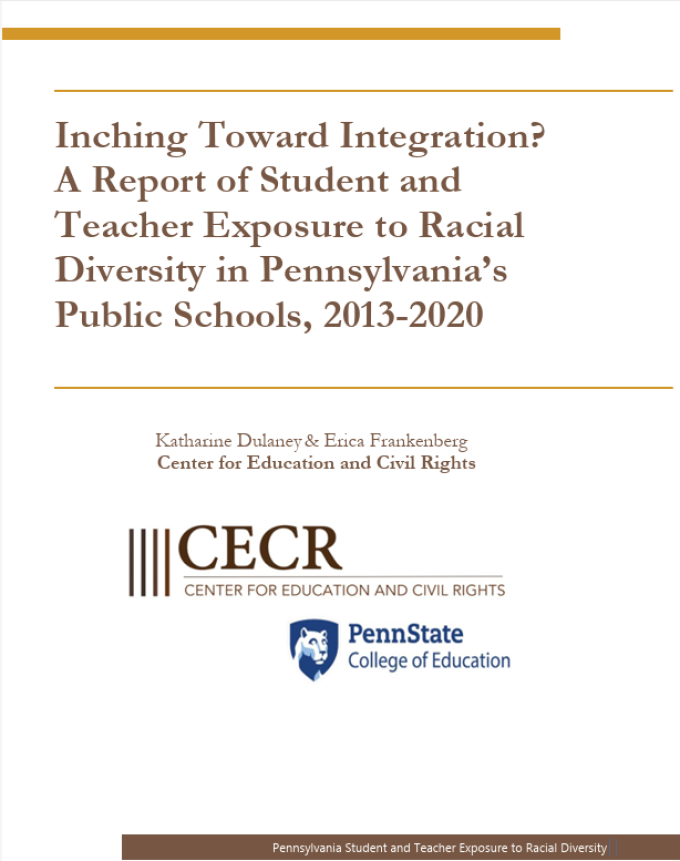
Inching Toward Integration? A Report of Student and Teacher Exposure to Racial Diversity in Pennsylvania’s Public Schools, 2013-2020
Description: In the last decade, Pennsylvania and especially its public school enrollment have experienced racial diversification, and at the state-level there is an increased demographic gap between teachers and students. Brown v Board of Education decision in 1954 was decided, in part, on evidence about the harms of segregation. Research continues to support the benefits of integration of students and teachers. To inform educational leaders and policymakers in Pennsylvania, we analyze data from 2013-14 to 2019-20 to examine, at the school-level, the extent to which students are exposed to diverse students and teachers. In addition, we examine what type of cross-racial experiences teachers have to students and fellow teachers in their schools. We report here our analysis of the three largest groups in PA schools: White, Black, and Latinx students and teachers. (2021)
Source: Katharine Dulaney & Erica Frankenberg | CECR
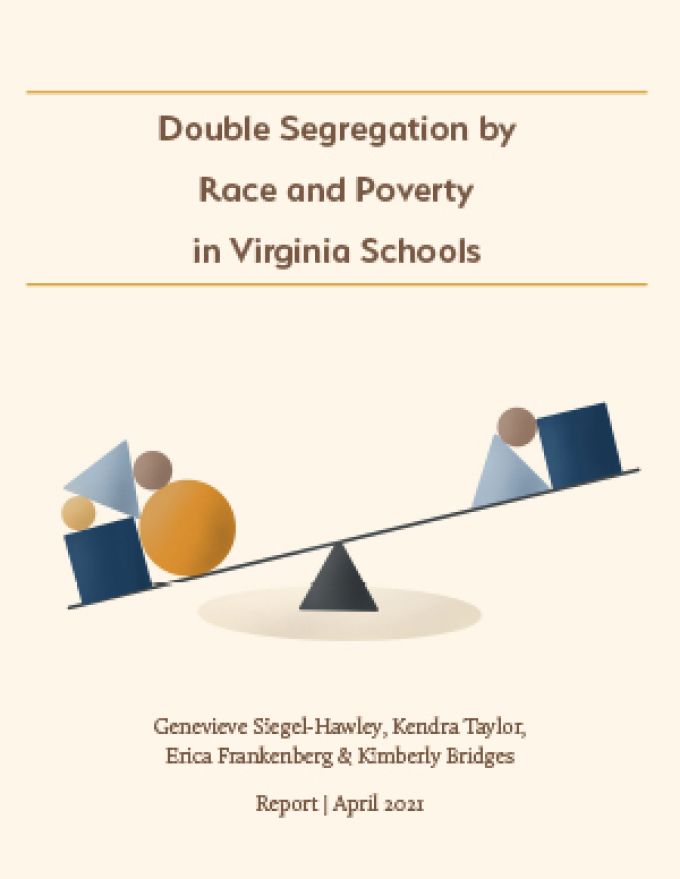
Double Segregation by Race and Poverty in Virginia Schools
Description: Race and class, related but distinct student and family attributes, intersect in powerful ways to shape learning opportunities. A recent Stanford study, based on roughly 100 million test scores in over 300 metro areas, found that disparate white and Black student exposure to school poverty is highly correlated with persistent racial achievement gaps. In other words, racially unequal concentrations of poverty in schools are a central explanation for the racial achievement gap, as measured by standardized test scores. This research brief explores the contours of school segregation by race and poverty in Virginia over the past decade. (2021)
Source: Genevieve Siegel-Hawley, Kendra Taylor, Erica Frankenberg & Kimberly Bridges | CECR

Research-Informed State Policy Recommendations to Support School Integration in Virginia
Description: A summary of recommendations provided in this series of briefs on School Integration in Virginia.(2021)
Source: Center for Education and Civil Rights
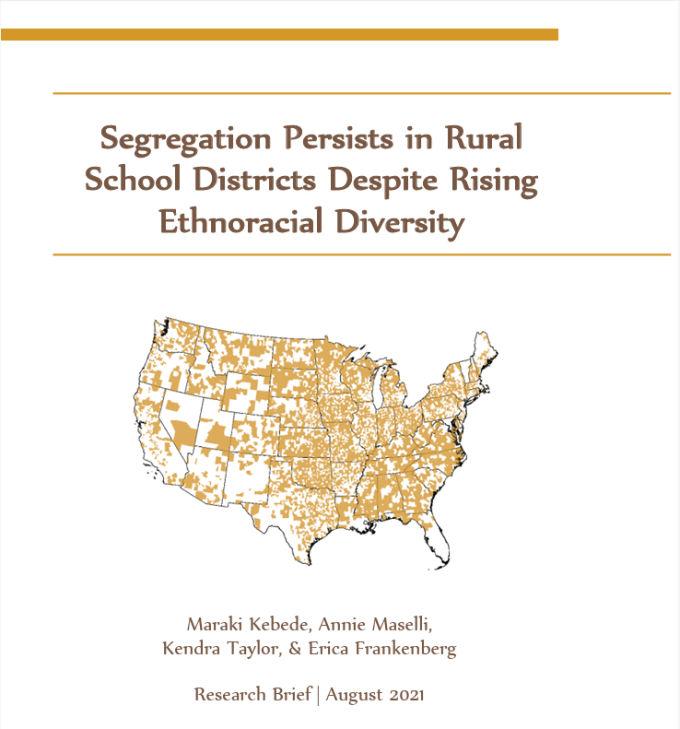
Segregation Persists in Rural School Districts Despite Rising Ethnoracial Diversity
Description: This brief examines the extent and nature of ethnoracial diversity and segregation in rural school districts between 2000 and 2019. We find that rural America and its public school districts are experiencing growing diversity and rising poverty. These overall patterns vary by region and ethnoracial identity of students. Drops in the share of White students and rises in poverty were both substantially more pronounced in districts with a majority of Black, Hispanic, or American Indian and Alaskan Native students. Further, while most rural students became less ethnoracially isolated within their districts, after accounting for each ethnoracial group’s share of rural enrollment, minoritized rural students are the most segregated. (2021)
Source: Maraki Kebede, Annie Maselli, Kendra Taylor, & Erica Frankenberg | CECR
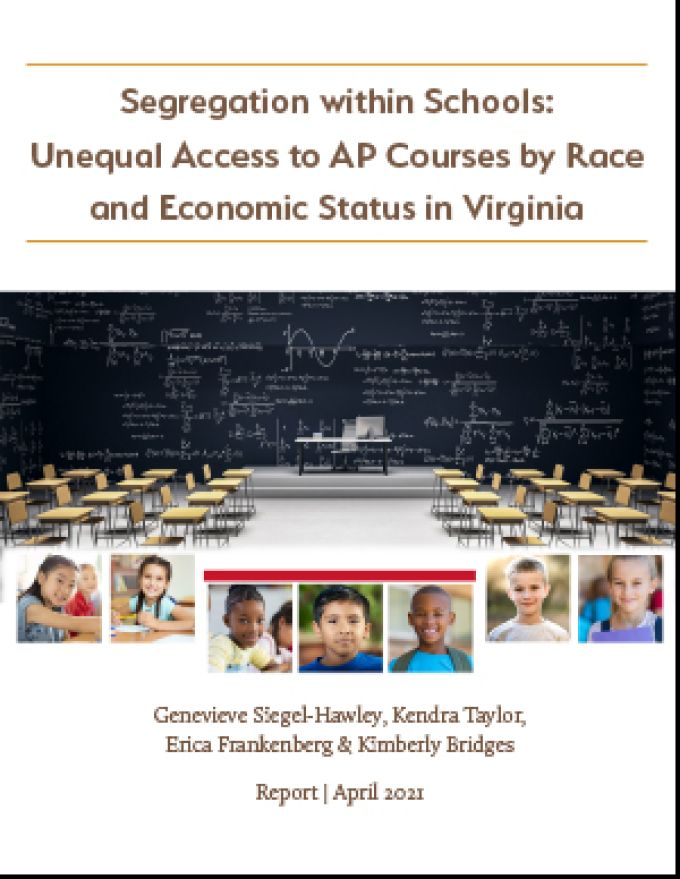
Segregation within Schools: Unequal Access to AP Courses by Race and Economic Status in Virginia
Description: In 2016, a student-led advocacy organization called IntegrateNYC set about reclaiming the three Rs—moving past the standard reading, (w)riting, and ‘rithmetic to a systemic demand for “real integration.” The reimagined R’s offer a full portrait of school integration, one that focuses both on bringing a diverse group of students into the same school together, and then on successfully leading, teaching and learning in diverse schools and classrooms. The other briefs in this series on school segregation in Virginia focus on the drivers and nature of segregation between schools. This one focuses mainly on segregation within schools, drawing on both the resource allocation “R” and the relationships across group identity “R,” in the form of access to Advanced Placement (AP) courses. (2021)
Source: Genevieve Siegel-Hawley, Kendra Taylor, Erica Frankenberg & Kimberly Bridges | CECR

COVID Fall 2020 Plans in PA
Description: As summer wanes, educators and community leaders face tough challenges in determining how to open public schools across the Commonwealth and nation due to the unabated nature of the COVID-19 pandemic. This pandemic has unevenly affected communities for reasons related to structural racism and inequality. In order to reopen, Pennsylvania required each of its 500 school districts to submit their own Health and Safety plans for the 2020-2021 academic year. We surveyed all districts’ Health and Safety plans in an effort to understand trends in reopening decisions across the state. (2020)
Source: Katharine Dulaney & Erica Frankenberg | CECR
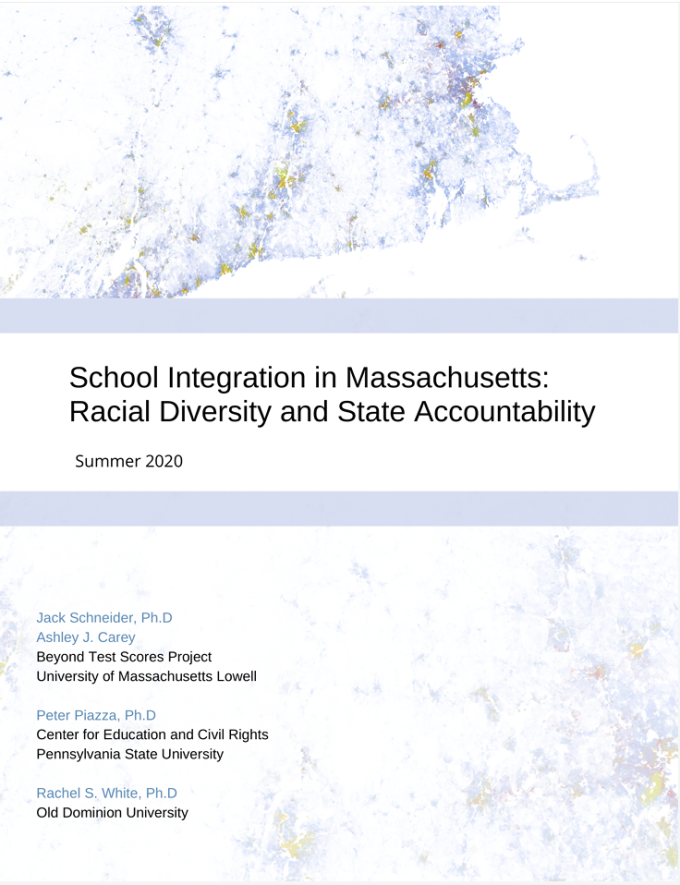
School Integration in Massachusetts: Racial Diversity and State Accountability
Description: Working with the Beyond Test Scores project at UMass-Lowell, the Center for Education and Civil Rights reviewed over a decade of demographic data on Massachusetts K-12 public schools as well as the previous 8 years of state accountability data. Our new report documents troubling trends in the rise of intensely segregated schools serving students of color as well as decreases in the share of racially diverse schools and intensely segregated white schools consistent with the increase in diversity across the state since 2008.
Source: Jack Schneider, Ashley J. Carey, Peter Piazza, & Rachel S. White
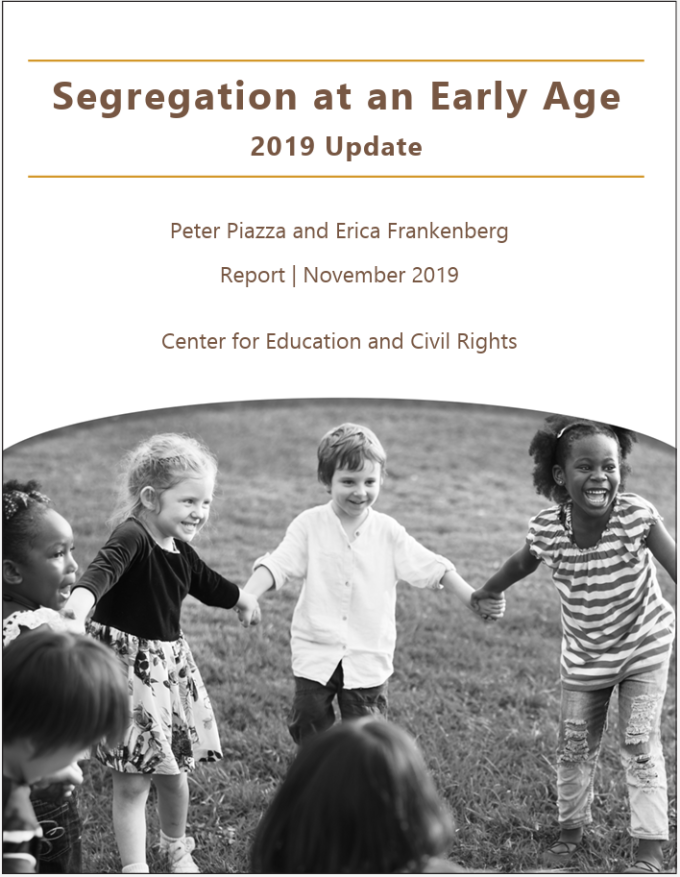
Segregation at an Early Age
Description: November 2019 Update | As children of color now make up the majority of the U.S. population under age five, national conversations about race remain polarized. A UCLA survey of over 500 high school principals found that more than 80% observed students making derogatory racial or ethnic remarks, reflecting growing political division. In this context, Penn State’s Center for Education and Civil Rights (CECR) highlights ongoing preschool segregation. Using 2015–16 Civil Rights Data Collection from over 29,000 schools and 1.58 million preschoolers—about 20% of U.S. three- and four-year-olds—the report shows how segregation varies by state and outlines steps toward preschool integration during a critical stage of early racial awareness. (2019)
Source: Peter Piazza & Erica Frankenberg | CECR
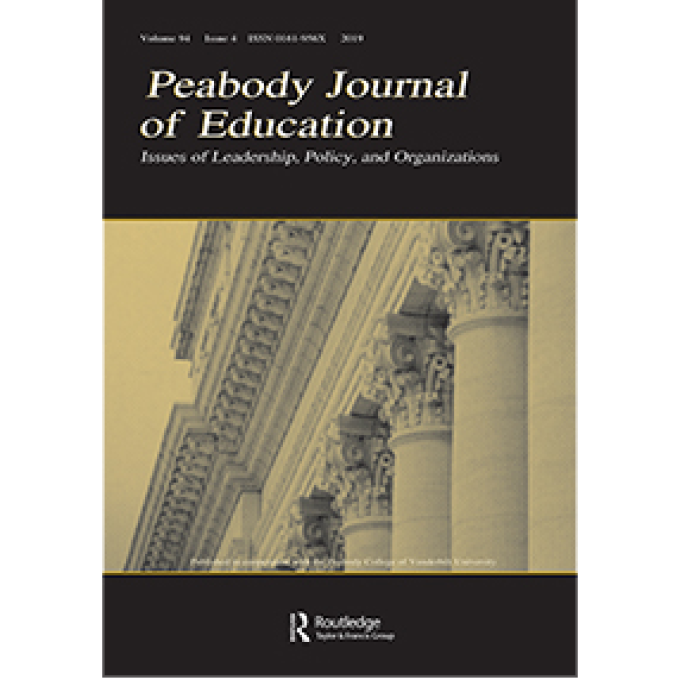
School and Residential Segregation in School Districts with Voluntary Integration Policies
Description: This study documents and measures the racial and income segregation from 2000 to 2015 in U.S. districts engaged in voluntary integration, examining the relationship between integration methods and levels of segregation. Block group-level segregation is also measured to better understand residential patterns of segregation within the districts and contextualize school-level trends. (2019)
Source: Kendra Taylor, Jeremy Anderson, Erica Frankenberg in Peabody Journal of Education

Racial Segregation in the Southern Schools, School Districts, and Counties Where Districts Have Seceded
Description: The establishment of new school districts in predominantly White municipalities in the South is restructuring school and housing segregation in impacted countywide school systems. This article compares the contribution of school district boundaries to school and residential segregation in the Southern counties that experienced secession since 2000. Merging together several data sets, including Common Core of Data, census data, and shapefiles at multiple geographic scales, we measure segregation of public school students and the entire population over time. We show that school district secession is restructuring school segregation in the counties where secession is occurring, with segregation increasingly occurring because students attend different school districts. Additionally, in the most recent year of analysis, residents were increasingly stratified by race in different school districts. Segregation patterns differ substantially, however, depending on the history of secession in the county. (2019)
Source: Erica Frankenberg, Kendra Taylor and Genevieve Siegel-Hawley

Harming our Common Future: America's Segregated Schools 65 Years after Brown
Description: The publication of this report marks the 65th anniversary of Brown v. Board of Education, the landmark U.S. Supreme Court case declaring racial segregation in public schools unconstitutional. In the immediate years after the Brown ruling, the effort to integrate schools faced many difficult challenges and progress was limited. [....] As we mark the 65th anniversary of Brown, there have been many changes since the ruling, but intense levels of segregation—which had decreased markedly after 1954 for black students—are on the rise once again. (2019)
Source: Erica Frankenberg, Jongyeon Ee, Jennifer B. Ayscue, and Gary Orfield
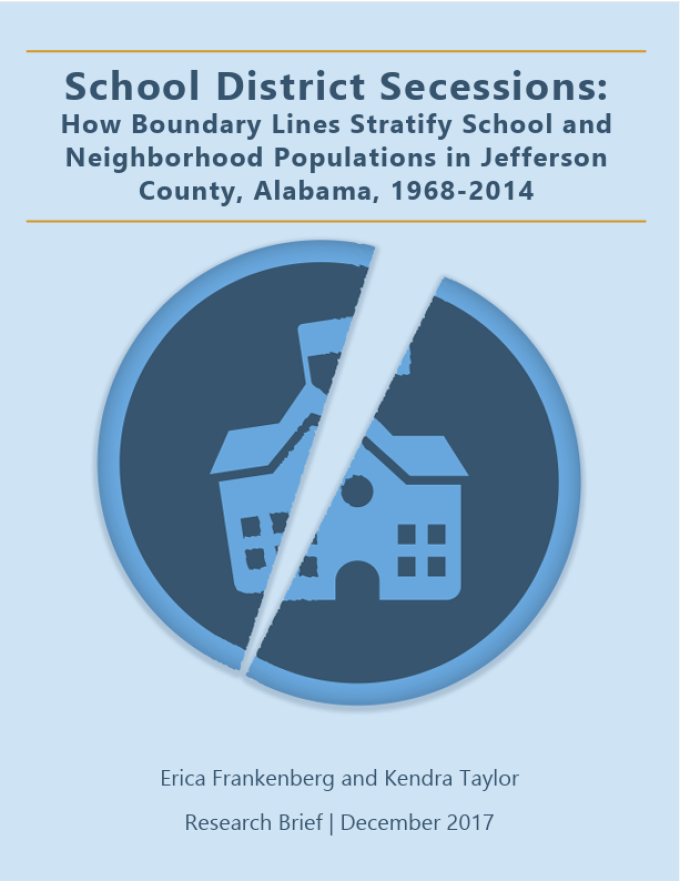
School District Secessions: How Boundary Lines Stratify School and Neighborhood Populations in Jefferson County, Alabama, 1968-2014
Description: As our nation and our public school enrollment grow more racially diverse, and we continue to learn about the myriad of ways in which exposure to diversity in schools and neighborhoods benefits all, especially young people, it is important to carefully consider the creation of new structures like school district boundary lines that may further separate areas into homogenous subunits. Rethinking the provision of public schooling as a collective good instead of thinking of it as an individual benefit for students and their families is a first step towards critically assessing how this new generation of local control, when overlaying existing stratification, will further inequality. (2017)
Source: Erica Frankenberg and Kendra Taylor
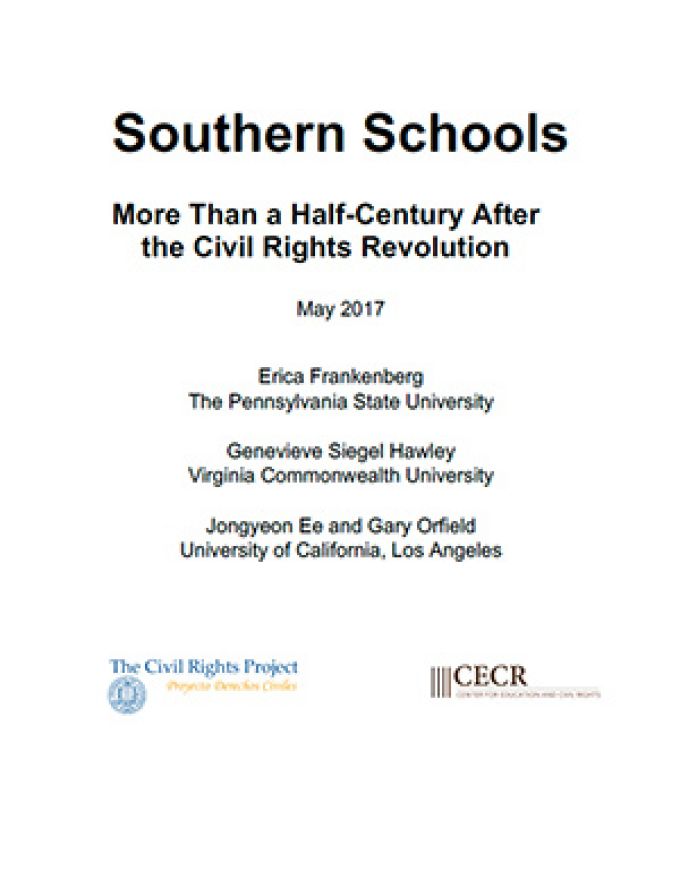
Southern Schools More Than a Half-Century After the Civil Rights Revolution
Description: Black and Latino students in the South are increasingly isolated in intensely segregated schools and are doubly segregated in schools serving low-income students, according to new research released May 24, 2017 by the Civil Rights Project/Proyecto Derechos Civiles at UCLA and the Center for Education and Civil Rights at Penn State. This report shows reversal of civil rights era gains in the region and that charter schools are more segregated for Black and Latino students. (2017)
Source: Erica Frankenberg, Genevieve Siegel Hawley, Jongyeon Ee, & Gary Orfield


